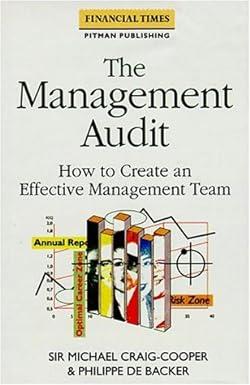Question
A standard is a benchmark or norm for evaluating performance. Manufacturing companies commonly set exacting standards for materials, labor and overhead for each product. Standards
A standard is a benchmark or norm for evaluating performance. Manufacturing companies commonly set exacting standards for materials, labor and overhead for each product. Standards are set for both quantity and price of inputs (how much we are supposed used and how much we are supposed to spend). Actual quantities and prices of inputs are compared to standards. The differences are called variances. We have six variances to learn in this chapter: DM price variance & DM quantity variance DL rate variance & DL efficiency variance VMOH rate variance & VMOH efficiency variance Once you have read the chapter and worked through the homework - answer the following questions: 1) Will waste on the production line result in a materials price variance? 2) Are labor rate variances out of management's control? 3) If your employees take longer to complete a job than expected will you have an unfavorable labor rate variance? 4) Should management investigate ALL variances?
Step by Step Solution
There are 3 Steps involved in it
Step: 1

Get Instant Access to Expert-Tailored Solutions
See step-by-step solutions with expert insights and AI powered tools for academic success
Step: 2

Step: 3

Ace Your Homework with AI
Get the answers you need in no time with our AI-driven, step-by-step assistance
Get Started


